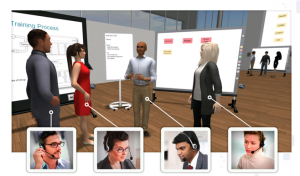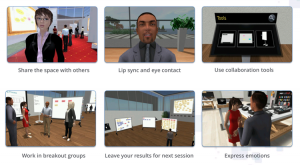Adding a whole new dimension to supply chain learning


Involvation has invented a truly unique learning concept called The Value Chain Academy, in which a tailor-made learning path is developed for each customer based on the existing learning needs and the target group. The options range from a short, one-off training programme to a worldwide, entirely in-house Supply Chain Academy (which we have been doing for one customer for more than six years, for example). Each learning trajectory is made up of a selected number of components, from e-learning to case studies and from serious games to classroom sessions. All the training revolves around ‘experiential learning’: letting participants experience things for themselves to improve the effectiveness of the learning process. And thanks to 3D learning, we are now in an even better position to facilitate remote learning.
The ROI of training
Determining the ROI of training continues to be the holy grail. What is the actual payback on investment in training? On the benefit side, training programmes are increasingly being coupled with concrete projects and targets, such as learning-on-the-job projects that are linked to the results actually achieved. Meanwhile, the cost side involves various aspects; besides faculty (internal and/or external), there is the issue of taking up the participants’ precious time, and another factor is the out-of-pocket costs for training venues and travel expenses (flight, accommodation, etc.). Unfortunately, when the ROI of training is unclear, the out-of-pocket costs are all too often a prime target for cost-saving measures. Most of us have experienced travel bans or black-out periods resulting in the abrupt cancellation of training courses and business trips. We sometimes just have to accept it as a fact of life, regardless of whether it is the right decision…
Remote learning
People have long been asking us to provide more remote training. In fact, that’s one of the reasons why we’ve developed our own e-learning curriculum in recent years, and we’ve increased the number of webinar-based training sessions too. But to be honest, many training programmes – such as those involving a lot of participant interaction – were unsuitable for e-learning or webinars, but classroom sessions were considered too expensive so they were scrapped. Advancements in virtual reality (VR) and augmented reality (AR) are very interesting and have lots of potential, but are not yet mature enough for our purposes. So we went in search of – and found – an alternative.
3D learning

Earlier this year we started working with a new method called 3D learning, in conjunction with the Swiss developer of the technology. Avatars are created for the trainer/facilitator and the participants. After logging in as their avatars, they can all get together on a ‘learning island’. The island has various different areas enabling the use of various learning methods and approaches – ranging from a PowerPoint presentation to a brainstorm session and from a one-on-one meeting to a role-play exercise. The big advantage is it offers almost the same level of interaction as in a classroom session, but participants can come together on the ‘virtual learning island’ remotely, i.e. without having to travel. This generates substantial savings in terms of both expenses and time. Preparing and scripting the training sessions now has to be done slightly differently, and the sessions themselves tend to be shorter and more frequent (e.g. blocks of 2-3 hours rather than a whole day). But we believe this solution has great potential – not only for training sessions, but also for workshops and coaching trajectories, for example.
Interested?
3D learning can be a perfect solution for companies with a wide geographic spread that find it too costly to get employees together in one place regularly. We also see numerous potential applications in terms of building virtual teams and communities. If you’re interested in learning more about the possibilities, please contact Alfons Willemsen.




